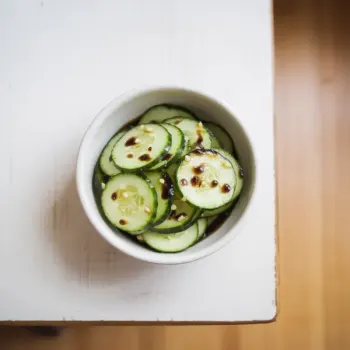
 35 minutes
35 minutesA delightful dish from the heart of Asturias and Cantabria, featuring hake steaks braised in a rich cider-tomato sauce.


Large Onion, chopped
each
tablespoons
Garlic Clove, finely chopped
each
Large Tomato, peeled and chopped
each
teaspoons
Hard Cider
cups
to taste
Hake Steaks
0 oz
Flour
for dredging
1. Cook Onion
Begin by heating 2 tablespoons of olive oil in a wide skillet over medium heat. Add the chopped onion and cook it until it becomes soft, stirring occasionally. This should take about 5 minutes.
2. Cook Garlic
Next, stir in the finely chopped garlic and continue to cook until the garlic turns a light golden color, infusing the oil with its aroma.
3. Add Tomatoes and Sugar
Once the garlic is ready, add the peeled and chopped tomatoes along with the sugar. Cook the mixture until much of the liquid from the tomatoes evaporates, concentrating the flavors. This process should take around 5 to 7 minutes.
4. Add Cider and Reduce Sauce
Once the tomato mixture has thickened, pour in the hard cider and add a pinch of salt. Bring the mixture to a boil and let it cook for 5 to 10 minutes, allowing the sauce to reduce and the flavors to meld together.
5. Prepare Hake Steaks
While the sauce is reducing, season the hake steaks with salt. Dredge each steak lightly in flour and shake off any excess.
6. Fry Hake Steaks
Heat a bit more olive oil in another pan and briefly fry the fish, turning once, until they have a light golden crust. This should take just a couple of minutes on each side.
7. Combine Fish and Sauce
Transfer the fried hake steaks to the skillet with the cider-tomato sauce. Let them cook together for another 3 to 5 minutes, spooning the sauce over the fish occasionally. The fish is done when it is opaque throughout and just begins to flake when tested with a fork.
Ensure the hake is fresh with a clean smell and firm flesh. Substitute with similar white fish like cod or halibut if needed, adjusting cooking times accordingly.
Use a dry, hard cider after searing to lift flavorful bits and infuse the sauce with rich flavor.
Aim for an internal temperature of 145°F (63°C) or check for opacity and flakiness.
Removing excess moisture is crucial for achieving a good sear and caramelization.
Combine fresh and canned tomatoes, and consider adding tomato paste for depth.




Comments (0)